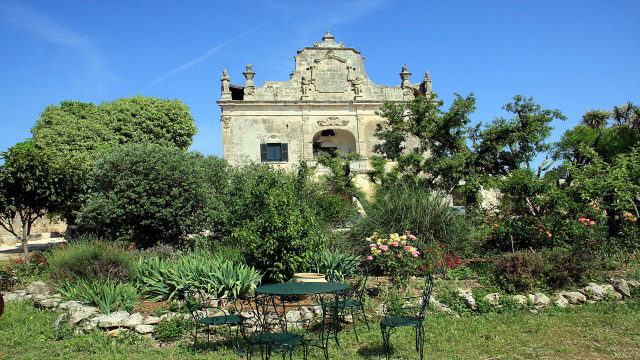
Carestia Farm
This post is also available in:
 Italiano (Italian)
Italiano (Italian)
“Carestia” means “Famine” and in this case, it relates to the dryness of the rugged and stony ground, covered with holm oaks, mastic trees, myrtles and other species of the Mediterranean scrub all over this farm. Much of the estate is used as pasture for goat breeding.
The farm was built between 1752 and 1777, a few steps from the sanctuaries of Sant’Oronzo, the patron Saint of Ostuni, and San Biagio, on the slope of one of the hills covered by the forest.
The farm is enclosed by a long wall built because of the many local brigands and features two entrances – one of them has a flight of 15 arches covered with vines – leading to a large courtyard, on the sides of which there are the farmers’ lodging, the stables, the warehouses and a small church with the inscription “Here you cannot enjoy asylum beyond the completion date of the works: 1752”.
The gardens of the local farms (especially the larger ones) are made of several themed rooms, each with a prevalent crop. At Carestia farm, there are three enclosures protected by high walls: one hosts fruit trees with vines, walnuts, medlars and figs (adjacent to the pergola of stone arches that leads to the main courtyard). On the back and on one side of the chapel, there is a garden with pomegranates and a grove of orange trees, shielded from the wind by the surrounding walls.
The courtyard leads to the stately home (one of the most elegant of the time, built on two floors), the farmer’s abode, the church, the stables, and the buildings that currently house a collection of ancient carriages.
This post is also available in:
 Italiano (Italian)
Italiano (Italian)
Contatti
Ostuni(BR)
